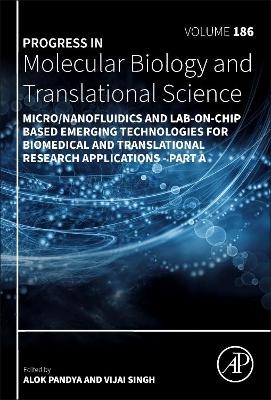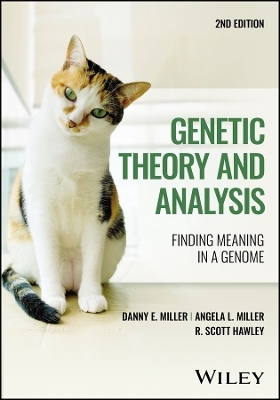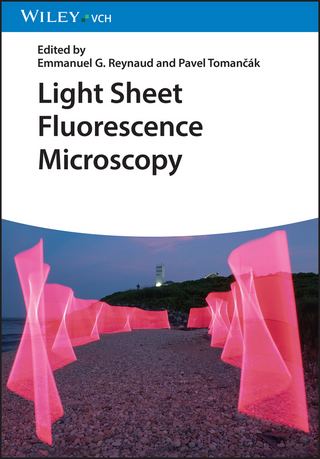
Micro/Nanofluidics and Lab-on-Chip Based Emerging Technologies for Biomedical and Translational Research Applications - Part A
Academic Press Inc (Verlag)
978-0-323-98899-5 (ISBN)
Additional chapters cover Microfluidics for single cell analysis, Fluorescence Based Miniaturized Microfluidic and Nanofluidic Systems for Biomedical Applications, Active Matter Dynamics in Confined Microfluidic Environments, Challenges and opportunities in micro/nanofluidics and lab-on-a-chip, and Paper-microfluidic signal-enhanced immunoassays.
Dr. Alok Pandya is an Interdisciplinary Researcher and Assistant Professor at Department of Engineering and Physical Sciences, Institute of Advanced Research (IAR), Gandhinagar, Gujarat, India. His research work is broadly focused on nanobiotechnology, nanochemistry, and forensic nanotechnology. He has completed his PhD from Gujarat University and awarded with GSA-CHARUSAT Best thesis award for development of various high sensitive nanoassemblies to detect metal ion, non-metal ion, biomolecule and illicit drugs in a forensic context. Later, He joined as Post-Doctoral Research Associate (2013-16) and Young Scientist (2016-17) at Division of biological Sciences, Ahmedabad University, Gujarat, India for development of point of care prognostic kit for cardiac specific biomarker using lateral flow immunoassay. In 2016, he received a first prestigious independent SERB- Young Scientist project to design and development of nanodevice for early detection of multiple cardiac specific biomarker. He has indigenously developed a vertical flow immunoassay-based immunokit for detection CRP and H-FABP. As a reflection, he received multiple translational projects from high repute funding agencies such as SERB-OPDF(Australia), DST, SERB & GSBTM. Currently, his significant research focuses on the development of affordable nanodevice for disease monitoring, agricultural nano-products, and products for societal use. He has published more than 52+ articles in high repute international Journals and published 2 full provisional Indian patent. In addition, he has published 10+ book chapters in the international publishing agency. He has published a 3 books entitled as Introduction of forensic nanotechnology as future armour (Nova Science Publisher USA), Micro/ nanofluidics and lab-on-chip based emerging technologies for biomedical and translational research applications, Volume 186 and volume 187 (Elsevier publications, Netherlands). He is also editor of journal of current nano-toxicology and prevention, Bentham Science Publisher. He has over 9+ Years’ experience of teaching in various subjects such as spectroscopy, nano-chemistry, nanobiotechnology, nano-biosensor, biochemistry, and forensic nanotechnology. He is also IAR placement cell and industrial relations coordinator, member secretary of IAR-student startup and innovation policy, Govt. of Gujarat, member secretary of IAR- Institution innovation council. Dr Vijai Singh is a Professor and Dean (Research & Innovation) at School of Sciences, Indrashil University, Rajpur, Mehsana, Gujarat, India. He was an Associate Professor in the Department of Biosciences, School of Sciences, Indrashil University, Rajpur, Mehsana, Gujarat, India. Prior this this, he was an Assistant Professor in the Department of Biological Sciences and Biotechnology at the Institute of Advanced Research, Gandhinagar, India and also an Assistant Professor in the Department of Biotechnology at the Invertis University, Bareilly, India. Prior to that, he was a Postdoctoral Fellow in the Synthetic Biology Group at the Institute of Systems and Synthetic Biology, Paris, France and School of Energy & Chemical Engineering at the Ulsan National Institute of Science and Technology, Ulsan, South Korea. He received his Ph.D. in Biotechnology from the National Bureau of Fish Genetic Resources, Uttar Pradesh Technical University, Lucknow, India with a research focus on the development of molecular and immunoassays for diagnosis of Aeromonas hydrophila. His research interests are focused on building novel biosynthetic pathways for production of medically and industrially important biomolecules. Additionally, his laboratory is working on CRISPR-Cas9 tools for genome editing. He has more than 11 years of research and teaching experience in synthetic biology, metabolic engineering, bioinformatics, microbiology, and industrial microbiology. He has published 100 articles, 70 chapters, 15 books and 3 patents. He serves as an associate editor, editorial board member, and reviewer of several peer-reviewed journals. He is also a member of the Board of Study and Academic Council of Indrashil University and is the Member Secretary of the Institutional Biosafety Committee (IBSC) at the same University.
Preface Vijai Singh and Alok Pandya 1. An introduction to microfluidics and their applications Nidhi Verma, Parth Prajapati, Vijai Singh and Alok Pandya 2. Design and fabrication of micro/nanofluidics devices and systems Terry Ching, Toh Yi-Chin and Michinao Hashimoto 3. Detection and separation of proteins using micro/nanofluidics devices Ashish Badiye, Neeti Kapoor and Ritesh K. Shukla 4. Micro/nanofluidic devices for DNA/RNA detection and separation Nidhi Verma, Sakshi Walia and Alok Pandya 5. Paper based microfluidics: A forecast toward the most affordable and rapid point-of-care devices Anirban Sinha, Mainak Basu and Prerna Chandna 6. Paper based micro/nanofluidics devices for biomedical applications P.E. Resmi, P.V. Suneesh, T. Ramachandran and T.G. Satheesh Babu 7. Advances of microfluidics devices and their applications in personalized medicine Rupesh Maurya, Nisarg Gohil, Gargi Bhattacharjee, Khushal Khambhati, Khalid J. Alzahrani, Suresh Ramakrishna, Dinh-Toi Chu and Vijai Singh 8. Microfluidics for single cell analysis Rupesh Maurya, Nisarg Gohil, Gargi Bhattacharjee, Khalid J. Alzahrani, Suresh Ramakrishna and Vijai Singh 9. Fluorescence based miniaturized microfluidic and nanofluidic systems for biomedical applications Aishwarya P. Waghchoure, J. Prakasha Reddy and Rajesh S. Bhosale 10. Active matter dynamics in confined microfluidic environments Rik Chakraborty, Arnab Maiti, Nikita Sharma and Krishna Kanti Dey 11. Paper-microfluidic signal-enhanced immunoassays N. Sathishkumar and Bhushan J. Toley 12. Challenges and opportunities in micro/nanofluidic and lab-on-a-chip Nidhi Verma and Alok Pandya
| Erscheinungsdatum | 18.01.2022 |
|---|---|
| Reihe/Serie | Progress in Molecular Biology and Translational Science |
| Verlagsort | Oxford |
| Sprache | englisch |
| Maße | 152 x 229 mm |
| Gewicht | 450 g |
| Themenwelt | Medizin / Pharmazie ► Medizinische Fachgebiete ► Biomedizin |
| Naturwissenschaften ► Biologie ► Biochemie | |
| Naturwissenschaften ► Biologie ► Genetik / Molekularbiologie | |
| ISBN-10 | 0-323-98899-7 / 0323988997 |
| ISBN-13 | 978-0-323-98899-5 / 9780323988995 |
| Zustand | Neuware |
| Haben Sie eine Frage zum Produkt? |
aus dem Bereich


